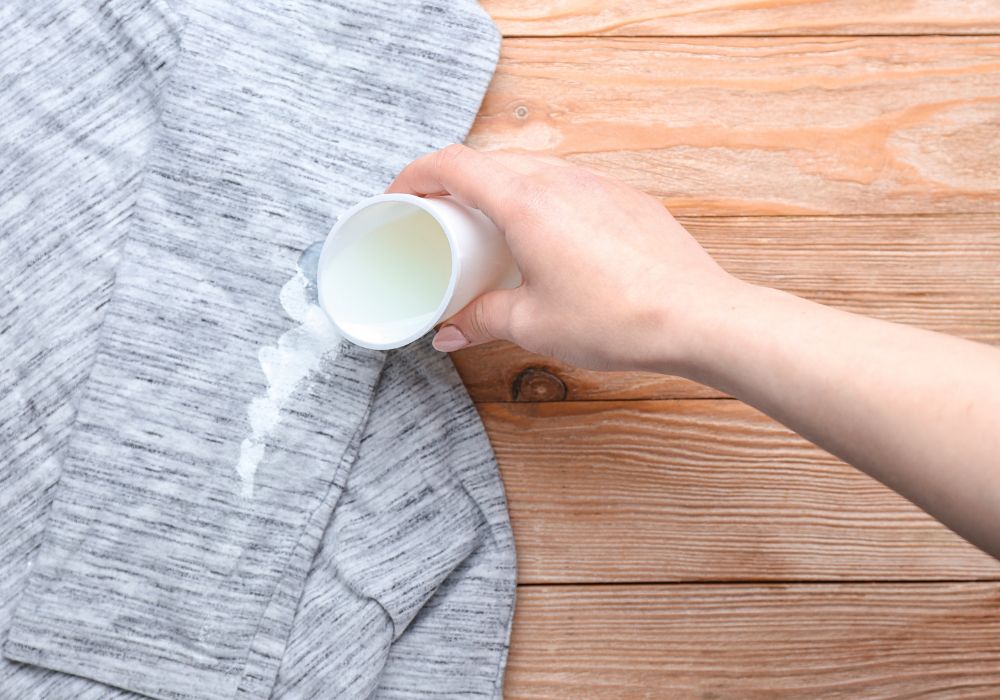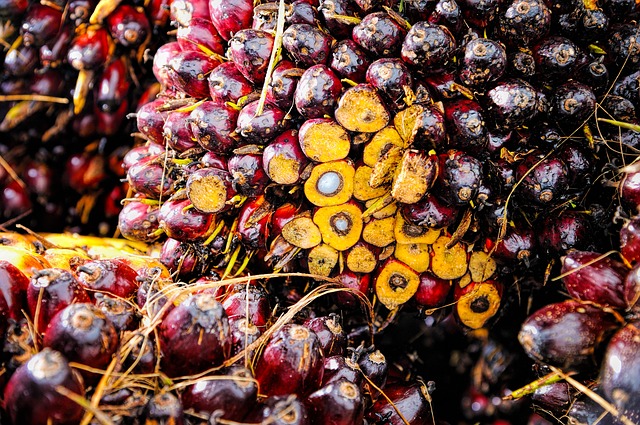This recipe delivers the holy grail of deep-fried fish: a light, crispy batter that shatters with a satisfying crunch and marries perfectly to tender, flaky fish. It’s surprisingly simple to achieve, requiring just a handful of pantry staples and a quick frying session. Here’s the best crispy fish batter for deep frying from Frymax.
Serves: 4
Prep Time: 15 minutes
Cook Time: 10 minutes per batch (depending on the thickness of the fish fillets)
Nutritional Information: (Per serving, excluding oil)
- Calories: 400
- Fat: 15g
- Saturated Fat: 2g
- Carbohydrates: 40g
- Protein: 25g
- Sodium: 500mg (depending on added salt)
Ingredients:
- 1 ½ cups all-purpose flour
- 1 tablespoon cornstarch
- 1 teaspoon baking powder
- ½ teaspoon paprika
- ¼ teaspoon garlic powder
- ¼ teaspoon onion powder
- 1 teaspoon salt
- Pinch of freshly ground black pepper
- 1 large egg, chilled
- ¾ cup cold water or ½ cup water and ½ cup pale ale (optional)
- Palm oil for frying
Method:
- Prepare the Dry Ingredients: In a large bowl, whisk together the flour, cornstarch, baking powder, paprika, garlic powder, onion powder, salt, and pepper. Ensure all the dry ingredients are well mixed with no dry lumps showing.
- Make a Well: Create a well in the centre of the dry ingredients by pushing the mixture outwards with your fingertips.
- Incorporate the Wet Ingredients: Crack the chilled egg into the well. Slowly whisk the egg, gradually incorporating the dry ingredients from the sides of the well until a smooth batter forms. Avoid over-mixing, as a few small lumps are okay.
- Adjust the Consistency: The batter should be slightly thicker than double cream. If it seems too thick, gradually whisk in cold water, a tablespoon at a time, until it reaches the desired consistency. Alternatively, for a slightly lighter and airier batter, substitute half of the water with pale ale.
- Let the Batter Rest: Cover the bowl with plastic wrap and refrigerate the batter for at least 30 minutes. This allows the gluten in the flour to relax, resulting in a lighter and crispier batter.
- Prepare the Fish: While the batter chills, pat your fish fillets dry with paper towels. Excess moisture will prevent the batter from adhering properly and can lead to splattering during frying. Aim for fillets that are about ¾ to 1 inch thick for even cooking.
- Heat the Oil: In a large Dutch oven or heavy-bottomed pot, heat enough sustainable palm oil (around 3-4 inches deep) over medium-high heat to 190°C. Use a thermometer to ensure accurate oil temperature – oil that’s too cool will result in greasy fish, while oil that’s too hot will burn the batter before the fish cooks through.
- Test the Oil Temperature: To test the oil temperature without a thermometer, dip the end of a wooden spoon into the hot oil. If it bubbles rapidly and constantly, the oil is ready.
- Fry the Fish: Dip each fish fillet into the chilled batter, ensuring it’s completely coated. Gently shake off any excess batter before carefully lowering the fish into the hot oil. Don’t overcrowd the pot; fry the fish in batches to maintain the oil temperature.
- Cook to Golden Perfection: Fry the fish for 3-5 minutes per side, or until golden brown and cooked through. The fish is done when it flakes easily with a fork.
Choosing the Perfect Catch
When selecting fish for deep-frying, the key lies in finding a variety that holds its shape well and boasts a mild, flaky texture. Here are some excellent options:
- White-fleshed fish: Cod, haddock, hake, halibut, and sole are all fantastic choices. Their mild flavour allows the batter to shine, while their firm flesh maintains its structure during frying.
- Oily fish: Salmon and catfish can also be used but be mindful of their stronger flavours that might require adjustments to the batter.
Beyond the Basic Batter: 8 Variations to Spice Up Your Fry
Our recipe provides a solid foundation for a fantastic batter, but feel free to experiment with these variations to add your own personal touch:
- Herb Heaven: Add a tablespoon of chopped fresh herbs like parsley, dill, or chives to the batter for a burst of freshness.
- Spicy Fiesta: Include a pinch of cayenne pepper or a teaspoon of sriracha to the dry ingredients for a delightful kick.
- Beer Batter Bliss: Substitute half of the water with your favourite pale ale for a lighter and airier batter with a hint of malty flavour.
- Tempura Twist: Replace half of the all-purpose flour with cornstarch for an incredibly light and crispy Japanese-style tempura batter.
- Gluten-Free Delight: Use a gluten-free flour blend in place of all-purpose flour. Ensure the blend contains xanthan gum for binding.
- Panko Power: For an extra-crunchy experience, dip the fish in beaten egg after coating it in batter, followed by a generous layer of panko breadcrumbs before frying.
- Sesame Seed Symphony: After coating the fish in batter, sprinkle generously with white or black sesame seeds for a nutty flavour and visual appeal.
- Curried Comfort: Add a teaspoon of curry powder and a pinch of garam masala to the dry ingredients for an Indian-inspired twist.
The Art of the Accompaniment: Pairing Perfection
While battered fried fish shines on its own, the right side dishes can elevate it to a whole new level. Here are some perfect pairings:
- Classic Comfort: French fries, coleslaw, and tartar sauce are timeless accompaniments that offer a delightful combination of textures and Flavors.
- Southern Charm: Hushpuppies, creamy grits, and baked beans add a heartwarming Southern touch to the meal.
- Asian Inspiration: Steamed rice, stir-fried vegetables, and a sweet and sour dipping sauce create a delightful Asian-inspired experience.
- Light and Fresh: A simple side salad with a light vinaigrette dressing provides a refreshing balance to the richness of the fried fish.
The Great Vinegar vs. Lemon Debate: A Matter of Personal Preference
Both vinegar and lemon juice are popular accompaniments to battered fried fish, offering contrasting yet equally delicious experiences. Here’s a breakdown to help you decide:
- Vinegar: Malt vinegar, the traditional choice in Britain, adds a tangy and slightly sweet flavour that cuts through the richness of the fried fish.
- Lemon: Freshly squeezed lemon juice offers a bright and acidic note that complements the fish’s flavour and adds a touch of freshness.
Ultimately, the choice between vinegar and lemon comes down to personal preference. Experiment with both and see what you enjoy most!
What’s the Best Oil for Deep-Frying?
The best oil for deep frying is sustainably sourced palm oil. This is because it has a high smoke point and a neutral flavour that complements the fish. Just be sure to choose palm oil that is certified sustainable to minimise environmental impact.
My Batter Isn’t Sticking to The Fish! Help!
There are two main reasons why your batter might not be adhering to the fish:
- Moisture: Ensure your fish fillets are completely dry before coating them in batter. Pat them thoroughly with paper towels to remove any excess moisture.
- Batter consistency: The batter should be slightly thicker than double cream. If it’s too thin, it won’t cling properly. Add a tablespoon of flour at a time until it reaches the desired consistency.
How Can I Guarantee a Crispy Batter?
Here are some secrets to achieving that coveted crispy perfection:
- Cold Ingredients: Use cold water and a chilled egg in your batter. This helps prevent the gluten from developing excessively, resulting in a lighter and crispier texture.
- Resting is Key: Let the batter rest in the refrigerator for at least 30 minutes. This allows the gluten to relax, further contributing to crispiness.
- Don’t Crowd the Pot: Overcrowding the pot with fish lowers the oil temperature, leading to a greasy and soggy batter. Fry the fish in batches to maintain optimal temperature.
What Are Some Common Problems I Might Encounter?
- Greasy Fish: The oil might not be hot enough. Aim for 190°C. Alternatively, the fish might have been too moist before frying.
- Soggy Batter: The batter might be too thick or not rested properly. Ensure the batter reaches the right consistency and refrigerate it for at least 30 minutes.
- Overcooked Fish: Keep an eye on the cooking time. Overcooked fish will become dry and chewy. The batter may be too thin and won’t have sealed the fish correctly when entering the oil – Pin holes are created as the moisture turns to steam, resulting in the hot oil cooking the fish on the inner side of the batter.
Can I Reuse the Frying Oil?
Yes, you can reuse the frying oil a couple of times. Strain it through cheesecloth or a fine-mesh sieve to remove any batter particles. Store it in an airtight container in a cool, dark place. However, dispose of the oil if it becomes too dark or has a strong odour.
How Long Can I Store Leftover Fried Fish?
Leftover fried fish can be stored in an airtight container in the refrigerator for up to 2 days. Reheat in a preheated oven or air fryer at 190°C for 5-7 minutes, or until warmed through.
Can I Bake the Fish Instead of Frying?
Yes, you can definitely bake the fish instead of frying it. Preheat your oven to 220°C. Lightly coat the fish in batter and place it on a baking sheet lined with parchment paper. Bake for 15-20 minutes, or until the fish is cooked through and the batter is golden brown.
What are Some Healthy Alternatives to Deep-Frying?
If you’re looking for a healthier option, you can try shallow frying the fish in a pan with a thin layer of oil. Alternatively, pan-searing or baking the fish are excellent methods that still deliver a delicious and crispy crust.
Frymax Palm Oil – the Oil of Choice for Deep-fried Perfection, Every Time
Frymax has been the UK’s largest supplier of frying oil to fish and chip shops and other food outlets and restaurants since 1954. And our oil doesn’t just give you the best results every time you heat up the frying pan, it’s the best choice for sustainability too. Since 2013, Frymax oil has been made from fully-segregated, RSPO-certified palm fruit oil. Not a drop of non-certified oil goes into the production of Frymax. Chippies, food truck owners, and restaurateurs can rest assured that, when they choose Frymax, they are supporting sustainable, ethical palm oil production. For more information don’t hesitate to get in contact with the helpful Frymax team.
Become a Frymax member today to gain access to exclusive content, expert frying advice and the chance to enter our fantastic competitions.






